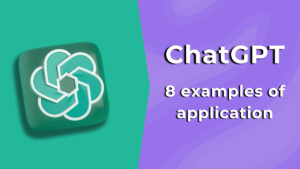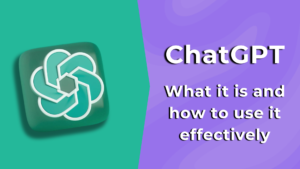Talking to the right person is important for any business. Time is one of the most precious resources and it is not worth wasting on customers that are not in line with the company target. The important thing is not the number of potential customers you reach, but rather getting the right ones: who converts, who buys the products / services and feeds word of mouth with other potential customers, and so on. For this reason, the classification of leads is fundamental.
Thanks to the classification, a lead is cataloged according to various demographic and behavioral factors, determining which of these have the greatest buying potential. When done correctly, lead classification saves time and money as it helps companies focus only on the most valuable prospects.
What are some ranking criteria that a qualified lead must adhere to? Economic availability, decision-making and purchasing power, product / service needs.
However, due to the changing needs and behaviors of both customers and markets, ranking leads can be a frustrating task if you don’t have the right tools and technologies.
What is a lead?
The definition of lead
But what is a lead? According to Philip Kotler‘s definition, considered the father of modern marketing, a lead is “a potential customer who has been identified with elements suitable for establishing a commercial contact”. In other words, a person interested in a product or service offered by a company. As a potential buyer, a lead comes into contact with the company by providing their contact details establishing a first interaction. At this initial stage, it has not yet been identified if the customer’s needs are in line with the company target.
How does a person become a lead?
- when they have come into contact with the online company;
- has shown interest in a company product / service;
- subscribed to the newsletter to stay updated on company services;
- has filled out a form with their contact details to receive an offer;
- left their data with an operator on the website’s live chat;
- when they sent an email with their contact details to request more information.
The difference between a lead and a prospect
In the sales funnel, that is the model that describes the classic buying behavior of a consumer, the concept of lead follows that of prospect. The latter can be defined as a potential customer who, after the first contact with the company, is identified as potentially interested in the product or service offered.
Lead generation
Lead generation indicates the set of strategies and actions aimed at acquiring and generating contacts interested in purchasing products or services. Such actions may include, e-mail marketing and social media marketing initiatives, but also lead magnets such as newsletters, webinars, e-books or podcasts.
In the acquisition and management process, the lead generation phase precedes those of lead qualification (classifying and selecting leads that may be more inclined to purchase) and lead nurturing (cultivating leads to minimize the risks of negative negotiation).
The various states of the leads
A lead can become a potential customer if the company can manage and cultivate it to convert it into a customer. In fact, a customer can remain a “cold lead”, that is, temporarily not interested in buying, even for a long time if they are not stimulated with specific activities (lead nurturing) that may lead them to buy a product or service in the future.
Keeping the relationship with the collected leads alive is essential to gain the customer’s trust and transform it from “cold contact” into “warm contact”. Depending on some marketing parameters, leads can be divided into “cold”, “warm” and “hot”:
- A hot lead is a person who already knows the product / service of a company, interested in buying and looking only for more information. This is therefore a target contact and close to purchase.
- A warm lead is a person interested in learning about the business proposal, but who has not yet developed a serious interest in the specific brand or product. If nurtured right, this type of contact can later become a hot lead and potential customer.
- A cold lead is a person who does not know the company and is not actively seeking information on the product or service for the moment.
What is lead classification?
Lead classification is the process of determining whether a lead is suitable and has the characteristics of an ideal prospect. If they do, then there is a good chance of them becoming an actual customer. A prospect must possess certain characteristics to qualify as an effective customer, for example: having an adequate purchase budget, decision-making power, need for a product / service and purchasing power.
Classifying leads partly means empathizing and identifying with the customer to whom you are speaking, trying to understand the needs and requirements that prompted them to get in touch with the company. And at the same time if it is a lead in line with the company target.
What can help rank leads? Insert questions in the company presentation to get to know the customer better and accompany them along the path through personalized communication, but also to maintain active contact while paying attention to the customer’s needs. Classifying leads allows you to meet the different needs that a customer may have in different moments of their journey, making him feel important and not just a number.
The evolution of lead classification
Before the recent digital transformation, leads were classified manually. This involved careful research of potential customers and subsequent manual entry of information, customer by customer. An exhausting operation that nevertheless pays off for the efforts: companies that classify leads increase their ROI by 77% compared to those that do not perform this operation.
But today, with the emergence of new technologies, it has become possible to classify leads automatically. By monitoring customer online behavior and collecting certain types of implicit information, large amounts of data can be analyzed and compared. The result is that the processes that have become automatic and more fluid.
How to use AI to classify leads
With Artificial Intelligence (AI), the algorithms can classify leads based on the customer’s personal and corporate information. This makes it much easier and faster to rank opportunities or leads based on their chances of closing.
These lead classification and assignment processes are possible thanks to Klondike. Thanks to AI algorithms, you can assign leads to your sellers completely automatically and based on the criteria you prefer, saving time spent on repetitive tasks and dedicating it to what matters: your customers.
If you want to find out more, click here.







